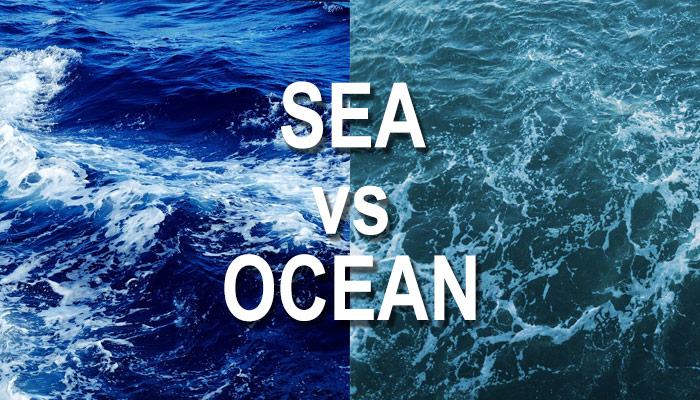Website launhed!

Some times we use terms "ocean" and "sea" interchangeably. But there are huge differences between these two. Read the below table and then you can easily differentiate between ocean and sea. Here are ten major differences between oceans and seas:
| Feature | Ocean | Sea |
|---|---|---|
| Size | Oceans are vast, covering over 70% of the Earth's surface. | Seas are smaller and usually partially enclosed by land. |
| Depth | Oceans are much deeper, with an average depth of about 3,700 meters. | Seas are generally shallower, with varying depths but usually less than oceans. |
| Salinity | Oceans typically have higher salinity levels. | Seas can have varying salinity levels, often lower than oceans. |
| Marine Life | Oceans support a broader range of marine life due to their vast size and depth. | Seas have a more diverse coastal marine life due to their proximity to land. |
| Temperature | Ocean temperatures are more stable and vary less dramatically. | Sea temperatures can change more rapidly due to their smaller size and depth. |
| Currents | Oceans have strong, large-scale currents such as the Gulf Stream. | Seas have weaker, smaller-scale currents influenced by local conditions. |
| Geographical Boundaries | Oceans are not bounded by land and are continuous expanses of water. | Seas are usually surrounded or partially enclosed by land. |
| Connectivity | Oceans connect to multiple continents and seas. | Seas connect primarily to oceans and sometimes other seas. |
| Examples | Pacific Ocean, Atlantic Ocean, Indian Ocean | Mediterranean Sea, Caribbean Sea, Baltic Sea |
| Exploration | Oceans have been explored less due to their size and depth. | Seas have been explored more extensively due to their accessibility. |
By understanding these differences, you can better appreciate the unique features and importance of both oceans and seas in our global ecosystem.
© 2024 InforMantra. Contact Us | About Us | Privacy | Disclaimer